FACILITIES
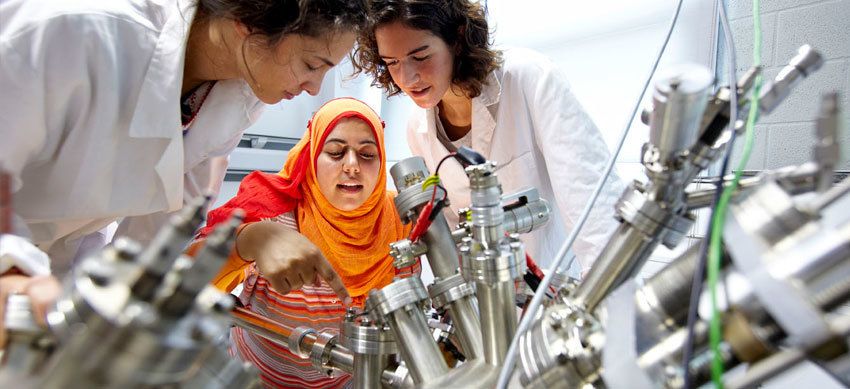
CFM infrastructure has been envisioned to characterize nanoscale materials with high sensitivity. Thus, the CFM headquarters building was built based on sophisticated architectural and engineering solutions to create a unique environment, free of electromagnetic interference and with an ultralow level of vibration. Since the opening of CFM headquarters in 2010, state of the-art facilities have been launched progressively, completing a set of very sophisticated and specialized experimental techniques, ready to give response to the needs in advanced materials characterization. These needs involve both generic research in nanomaterials, as well as specifically targeted systems of interest in energy and biological environments, perfectly aligned with the Smart Specialization Strategy (RIS3) and the 2030 Science, Technology and Innovation Plan (PCTI 2030) of the Basque Country, as well as with the IKUR Strategic lines defined by the Basque Dep. of Education.
LIQUID HELIUM RECOVERY AND SUPPLY PLANT FOR CRYOGENIC EXPERIMENTAL SYSTEMS
Put into use in 2022, CFM now has its own Helium recovery and supply plant. Due to the scarcity of liquid helium, its high cost and the strong dependence on its continuous supply by external suppliers, the performance of the experimental equipment in the CFM and its operability were compromised. This recovery and supply plant has proven a permanent solution to this problem, providing the CFM and its researchers with a common benefit facility that reduces research costs.
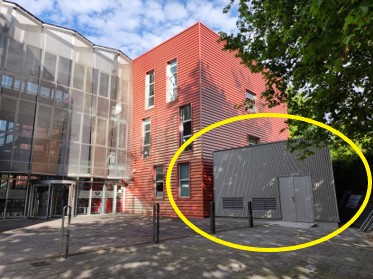

The following equipment and infrastructures are hosted and run at CFM by the different research groups:
CHEMICAL PHYSICS OF COMPLEX MATERIALS
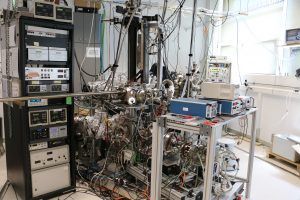 The “High Resolution Angle Resolved Photoemission” laboratory is equipped with an Angle Resolved Photoemission Spectroscopy (ARPES) system combined with atomic-resolved microscopy (Scanning Tunneling Microscope, STM). These two techniques can be used either jointly or separately. The ARPES instrument allows achieving ultra-high resolution (0.1 degrees, 5 meV) and can deal with samples at low temperature (40K). Samples can be prepared independently at two different preparation chambers and they can be inserted in the instrument via a fast-entry lock.
The “High Resolution Angle Resolved Photoemission” laboratory is equipped with an Angle Resolved Photoemission Spectroscopy (ARPES) system combined with atomic-resolved microscopy (Scanning Tunneling Microscope, STM). These two techniques can be used either jointly or separately. The ARPES instrument allows achieving ultra-high resolution (0.1 degrees, 5 meV) and can deal with samples at low temperature (40K). Samples can be prepared independently at two different preparation chambers and they can be inserted in the instrument via a fast-entry lock.
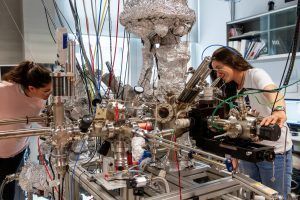 The “Surface Chemistry” laboratory is equipped with an Ultra High Vacuum chamber combining different surface characterisation techniques: X-Ray Photoemission Spectroscopy (XPS), Ultraviolet Photoelectron Spectroscopy (UPS), Low Energy Electron Diffraction (LEED) and Scanning Tunnel Microscope (STM) (with the possibility to use in Atomic Force Microscope (AFM) mode). The chamber has two samples preparation chambers, with the required Molecular Beam Epitaxy (MBE) and sample preparation tools.
The “Surface Chemistry” laboratory is equipped with an Ultra High Vacuum chamber combining different surface characterisation techniques: X-Ray Photoemission Spectroscopy (XPS), Ultraviolet Photoelectron Spectroscopy (UPS), Low Energy Electron Diffraction (LEED) and Scanning Tunnel Microscope (STM) (with the possibility to use in Atomic Force Microscope (AFM) mode). The chamber has two samples preparation chambers, with the required Molecular Beam Epitaxy (MBE) and sample preparation tools.
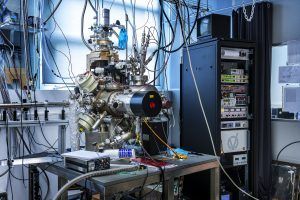 The “Surface Magnetism” laboratory hosts equipment for surface characterisation of samples by means of a homemade Magneto Optic Kerr Effect (MOKE, 15-300 K, 0.1 Tesla) and Scanning Tunnel Microscope (STM, Omicron, 70-800K) (combined or separately). The measuring ultra‑high vacuum chamber includes Low Energy Electron Diffraction (LEED) and Molecular Beam Epitaxy (MBE).
The “Surface Magnetism” laboratory hosts equipment for surface characterisation of samples by means of a homemade Magneto Optic Kerr Effect (MOKE, 15-300 K, 0.1 Tesla) and Scanning Tunnel Microscope (STM, Omicron, 70-800K) (combined or separately). The measuring ultra‑high vacuum chamber includes Low Energy Electron Diffraction (LEED) and Molecular Beam Epitaxy (MBE).
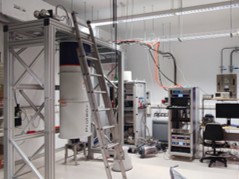 The “Ultra-Low Temperature Scanning Tunneling Microscopy” laboratory hosts an Atomic Force Microscopy (AFM) / Scanning Tunnel Microscope (STM) operable at 1K for characterisation of materials at atomic scale / Dilution refrigerator Oxford Proteox MX 500 with a base temperature of 7mK and uniaxial magnetic fields of up to 7 T.
The “Ultra-Low Temperature Scanning Tunneling Microscopy” laboratory hosts an Atomic Force Microscopy (AFM) / Scanning Tunnel Microscope (STM) operable at 1K for characterisation of materials at atomic scale / Dilution refrigerator Oxford Proteox MX 500 with a base temperature of 7mK and uniaxial magnetic fields of up to 7 T.
ELECTRONIC PROPERTIES AT THE NANOSCALE
 The “Ceramic and Cement-based Materials” laboratory consists of the following specific equipment for synthesizing ceramics and cements:
The “Ceramic and Cement-based Materials” laboratory consists of the following specific equipment for synthesizing ceramics and cements:
- High temperature ceramic ovens (Thermolyne model from ThermoFisher Scientific)
- A high temperature microwave oven that features 3100 Watts of microwave power and controllable temperature up to 2000°C (BP-211/50 model from Microwave Research and Applications, Inc.)
- Homemade sub- and super-critical reactors.
In the “Ceramic and Cement-based Materials” laboratory there is also an isothermal calorimeter (TAM Air 8-channel model from TA Instruments) for cements characterisation.
PHOTONICS
 In the “Laser Spectroscopy” laboratory, continuous and time-resolved (with nano-picoseconds excitation laser sources) spectroscopy systems with high spectral resolution in the ultraviolet-visible-infrared (UV-VIS-IR) radiation domains, together with low temperature facilities (2K), are used to characterise the properties of rare-earth- doped materials for lasing, spectral conversion, energy transfer and laser cooling. A homemade photoacoustic spectrometer is also available. These facilities are physically located at the Engineering School of Bilbao (out of the CFM main premises in Donostia / San Sebastián).
In the “Laser Spectroscopy” laboratory, continuous and time-resolved (with nano-picoseconds excitation laser sources) spectroscopy systems with high spectral resolution in the ultraviolet-visible-infrared (UV-VIS-IR) radiation domains, together with low temperature facilities (2K), are used to characterise the properties of rare-earth- doped materials for lasing, spectral conversion, energy transfer and laser cooling. A homemade photoacoustic spectrometer is also available. These facilities are physically located at the Engineering School of Bilbao (out of the CFM main premises in Donostia / San Sebastián).
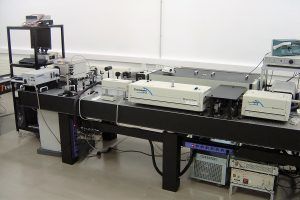 The “Ultrafast Spectroscopy” laboratory consists of picosecond (Infrared-Visible-Ultraviolet, IR‑VIS‑UV) and femtosecond (Infrared-Visible, IR-VIS) sources (with regenerative amplification) with high speed detectors in the picosecond domain (Streak camera), capable of measuring the fluorescence of atoms and ions of technological interest. There is also a multiphoton microscope with time-resolved possibilities to this end. These facilities are physically located at the Engineering School in Bilbao (out of the CFM main premises in Donostia / San Sebastián).
The “Ultrafast Spectroscopy” laboratory consists of picosecond (Infrared-Visible-Ultraviolet, IR‑VIS‑UV) and femtosecond (Infrared-Visible, IR-VIS) sources (with regenerative amplification) with high speed detectors in the picosecond domain (Streak camera), capable of measuring the fluorescence of atoms and ions of technological interest. There is also a multiphoton microscope with time-resolved possibilities to this end. These facilities are physically located at the Engineering School in Bilbao (out of the CFM main premises in Donostia / San Sebastián).
 The “Nanophotonics” laboratory hosts a scanning confocal time-resolved photoluminescence (TRPL) setup (MicroTime200, PicoQuant) providing single molecule sensitivity and high temporal resolution to measure the decay of quantum dot and molecular emitters. The range of application includes Fluorescence Lifetime Imaging (FLIM), Fluorescence Correlation Spectroscopy (FCS), Forster Resonance Energy Transfer (FRET), Fluorescence Lifetime Measurements, and Fluorescence Anisotropy and Intensity Time Traces.
The “Nanophotonics” laboratory hosts a scanning confocal time-resolved photoluminescence (TRPL) setup (MicroTime200, PicoQuant) providing single molecule sensitivity and high temporal resolution to measure the decay of quantum dot and molecular emitters. The range of application includes Fluorescence Lifetime Imaging (FLIM), Fluorescence Correlation Spectroscopy (FCS), Forster Resonance Energy Transfer (FRET), Fluorescence Lifetime Measurements, and Fluorescence Anisotropy and Intensity Time Traces.
Other available set-ups include:
- QUEPRO high-performance spectrophotometer connected to IX71 Olympus microscope for microphotoluminescence spectroscopy
- Cary50 spectrophotometer (Agilent) for absorption and transmission spectroscopy
- Cary Eclipse Spectrophotometers (Agilent) for range of applications including photoluminescence and photoluminescence excitation spectroscopy, photoluminescence anisotropy spectroscopy, photoluminescence kinetics, phosphorescence and delayed fluorescence lifetime measurements
- Chemat KW4A precision spin-coater for deposition of thin organic and inorganic films from solutions and self-assembly of nanostructures
In the “Materials Synthesis” laboratory, materials’ crystal growth is investigated by using homemade Bridgman and Czochralski furnaces. These facilities are physically located at the Engineering School of Bilbao (out of the CFM main premises in Donostia / San Sebastián).
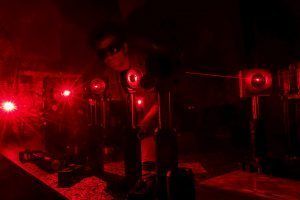 The “Quantum Nanophotonics” laboratory is fully stabilised in temperature and humidity, and hosts state-of-the-art facilities for the generation and control of quantum states of light:
The “Quantum Nanophotonics” laboratory is fully stabilised in temperature and humidity, and hosts state-of-the-art facilities for the generation and control of quantum states of light:
- Three optical tables for manipulating the polarisation as well as spatial and frequency degrees of freedom of entangled and single photon states: 1200 x 2400 x 305 mm table with isolators (784-655-12DR model from TMC), 1500 x 3000 x 305 mm table with isolators (784-675-12DR model from TMC) and 900 mm x 1800 mm x 305mm table with isolators (from Newport)
- A set of laser systems, including continuous wave lasers covering the ultra violet, visible and infrared regions, for producing different photon states: a 633nm, 10mW, He-Ne laser (from Thorlabs); a 403nm, 100mW, diode (from Toptica); a 680nm, 50mW, diode (from Toptica); a 808nm, 10mW, diode (from Thorlabs)
- Optically addressable cryostat, equipped with state-of-the-art nanopositioners, for cooling down nanostructures and nanoparticles to cryogenic temperatures (attoDRY 100 model from Attocube)
- A set of spatial light modulators (from Cambridge Correlators), polarisers (from Thorlabs and Standa) and Single Photon Counting Modules (SPCM, APDs SPCM-AQ4C model from Excelitas), for analysing the photons interacting with nanostructures at cryogenic temperatures
- Microwave generators and amplifiers (SMB100A model from Rohde & Schwartz), for addressing the electronic states of Nitrogen Vacancy centres in diamond
POLYMERS AND SOFT MATTER
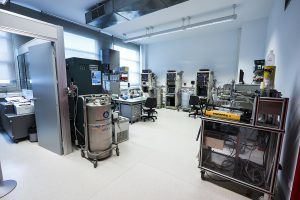
The “Dielectric Spectroscopy” laboratory provides characterisation of dielectric properties of materials, particularly polymers and soft matter. The combined use of several types of spectrometers, listed below, allows covering a wide dynamical range of more than 16 orders of magnitude (in frequency and time domain) and different sample environments:
- Broad-Band Dielectric Spectrometers (BBDS): ALPHA-S & ALPHA-A Novocontrol
- High-Frequency Dielectric Spectrometer (HFDS): Agilent E4991A RF-Impedance Analyzer
- Micro-Wave Dielectric Spectrometer (MWDS): Agilent E8361A Microwave Network Analyzer
- Terahertz Spectrometer (THS): Teraview 3000 spectrometer
- High-Pressure Dielectric Spectrometer (HPDS): Concept 100 Novocontrol
- Low-Temperature Dielectric spectrometer (LTDS): ALPHA-A Novocontrol
- Time-Domain Dielectric Spectrometer (TDDS): Novocontrol
- Thermally Stimulated Depolarization Currents (TSDC): Novocontrol
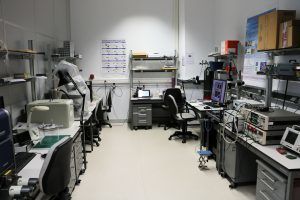
The “Microscopy” laboratory allows materials structural characterization by means of:
- Optical Confocal Microscopy (Leica TCS SPE DM5500, 120-520K)
- Scanning Electron Microscopy (SEM, Hitachi TM 3000, 250-320K)
- Atomic Force Microscopy (AFM, MultiMode V, Veeco, 250-470K)
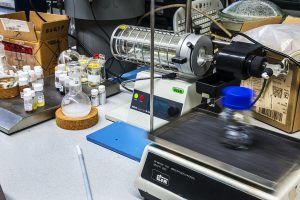
The “Chemistry” laboratory is specialised in synthesis of polymers and soft-matter based materials, with special focus on click chemistry methods. This laboratory can characterise physicochemical properties and stability of molecular and supramolecular chemical compounds using the following equipment:
- Absolute molecular mass distribution meter: Agilent 1200 GPC-SEC Analysis System + Light‑scattering Wyatt miniDAWN TREOS, viscosimeter ViscoStar II and Optilab rEX Refractive Index Detector
- Nanoparticle size and z-potential meter: Malvern Zetasizer Nano
- Viscometers EMS-1000 and Malvern SV-10 Vibro
- Surface tension meter: Contact Angle meter OCA 15 EC DataPhysics Instruments GmbH
- Liquid/solution density meter: ANTON PAAR, DMA 4500 M model
- UV-VIS spectrometer: Agilent 8453A with Peltier thermostated cell holder, T-controller 89090A
- Close vessel microwave assisted reactor: CEM Discover SP System (200-550K, 0-27 bar)
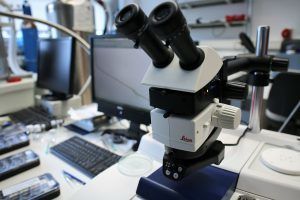
The “Thermal Chracterisation” laboratory hosts the following equipment for material characterisation, particularly polymers and soft matter:
- Differential Scanning Calorimetry analysis (DSC): Q2000 TMDSC – TA Instruments (100-700K) and Flash DSC1 – Mettler Toledo (180-700K)
- Thermogravimetric analysis (TGA): Q500, TA Instruments (290-1300K)
- Dilatometry (DIL): Zero Friction L75V, Linseis (100-800K) dual push rod version
- Pressure-Volume-Temperature (PVT): PVT100, Thermo Haake (200-550K, 200-2500 Bar)
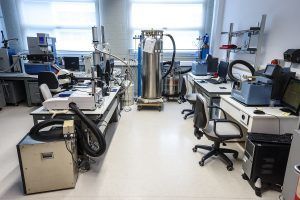
The “Reological characterisation” laboratory hosts the following equipment to perform rheological analysis in polymer and soft matter samples:
- ARES-LS2 rheometer – TA Instruments (130-800K) (1mHz-50Hz), with simultaneous electric impedance analyser (20Hz-1MHz)
- Minimat 200 Rheometrics Scientific (200-500K) miniature material tester

The “Absorption Spectroscopy Techniques” laboratory hosts the following equipment to characterise solid and liquid samples, particularly polymers and soft matter:
- For the molecular spectroscopy in the infrared (IR) domain: FT-IR – JASCO 6300 (130-400K)
- For the molecular spectroscopy in the terahertz (THz) domain: TPS SPECTRA 3000, TeraView
- Raman scattering: FT-RAMAN, JASCO RFT-6000
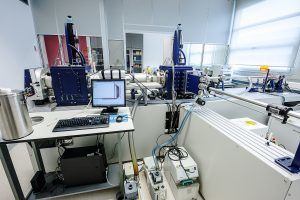
The “X-Ray” laboratory can provide structural characterisation of polymer and soft matter samples by means of Small Angle X-Ray Scattering (SAXS) and Wide Angle X-Ray Scattering (WAXS) techniques (individually or simultaneously), using the following equipment:
- SAXS: Rigaku PSAXS-L (120-520K), which can operate with simultaneous WAXS measurements
- WAXS: Bruker AXS D8 ADVANCE (120-520K)
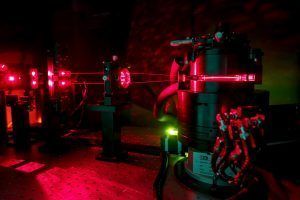 The “Light Scattering” laboratory can provide characterisation of polymer and soft matter samples by means of Static and Dynamic Light Scattering techniques (SLS and DLS, respectively), using a Light Scattering Spectrometer (288 – 363K) with modulated 3D technology.
The “Light Scattering” laboratory can provide characterisation of polymer and soft matter samples by means of Static and Dynamic Light Scattering techniques (SLS and DLS, respectively), using a Light Scattering Spectrometer (288 – 363K) with modulated 3D technology.
HIGH PERFORMANCE COMPUTING (HPC) CENTRE
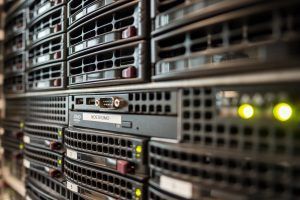 In addition to the experimental facilities, CFM has a High Performance Computing (HPC) Centre that provides scientific computing capabilities and support across all CFM research lines. The CFM Computing Centre consists of two Data Centers hosting five HPC clusters of different sizes, kinds and purposes, all adding up a total of 260 computing nodes summing up 5720 cores and 29TB or RAM. This provides CFM with a computing time of more than 50 million CPU hours a year, and an aggregated computing power of 147 TFLOPS of Theoretical Peak Performance.
In addition to the experimental facilities, CFM has a High Performance Computing (HPC) Centre that provides scientific computing capabilities and support across all CFM research lines. The CFM Computing Centre consists of two Data Centers hosting five HPC clusters of different sizes, kinds and purposes, all adding up a total of 260 computing nodes summing up 5720 cores and 29TB or RAM. This provides CFM with a computing time of more than 50 million CPU hours a year, and an aggregated computing power of 147 TFLOPS of Theoretical Peak Performance.
The four CFM HPC clusters are:
Oberon cluster (the main, general purpose, CFM HPC cluster), composed of 182 computing nodes with two Xeon processors and a memory range of 24 GB up to 256 GB per node, all of them sharing a high speed-low latency Infiniband connection network and a high performance shared parallel filesystem, giving a total of 2000 cores and 15 TB of memory. This cluster gives service to the whole CFM research community.
Nostromo cluster, targeted to shared memory – single node molecular dynamics calculations. It is composed of 17 AMD Opteron 6300 series computing nodes with 64 cores and 64 GB of RAM each node, giving a total of 1088 cores and about 1.1 TB of memory.
Ekhi cluster, designed specifically for novel Quantum ESPRESSO calculations, is composed of 28 computing nodes with two Xeon Cascade Lake-SP 6230 processors (40 computing cores) and 96 GB of memory in each node, with an Infiniband FDR interconnection network, giving a total of 1120 cores and 2.7 TB of memory.
Sama is a multipurpose cluster designed for high-level ab initio electronic structure calculations and molecular dynamics simulations. It is composed of 13 computing nodes with two Intel Xeon Gold 6240R processors (48 cores), 384 GB of memory, and 1 TB NVMe SSD disk per node, all interconnected through an Infiniband HDR 100 Gb/s network, and giving a total of 624 cores and 4.8TB of memory.
- LeChuck cluster, designed specifically for Quantum ESPRESSO calculations, is composed of 20 computing nodes with two AMD Milan 7443 processors (48 computing cores) and 128GB and 1024GB of memory in different nodes, with an Infiniband HDR interconnection network, giving a total of 888 cores and 5.25 TB of memory.
These five HPC clusters service a wide range of computational needs in the CFM, mainly related to ab-initio calculations of advanced materials, a transverse topic within the Centre. Apart from these four clusters, 12 workstations are dedicated to running specific numerical applications, and are also used for data analysis and code development and testing. All these equipments are managed by the CFM Scientific Computing Service that, in addition to administering the aforementioned equipments, also provides scientific and general computing advice to the CFM researchers, and organises scientific computing workshops and tutorials.



